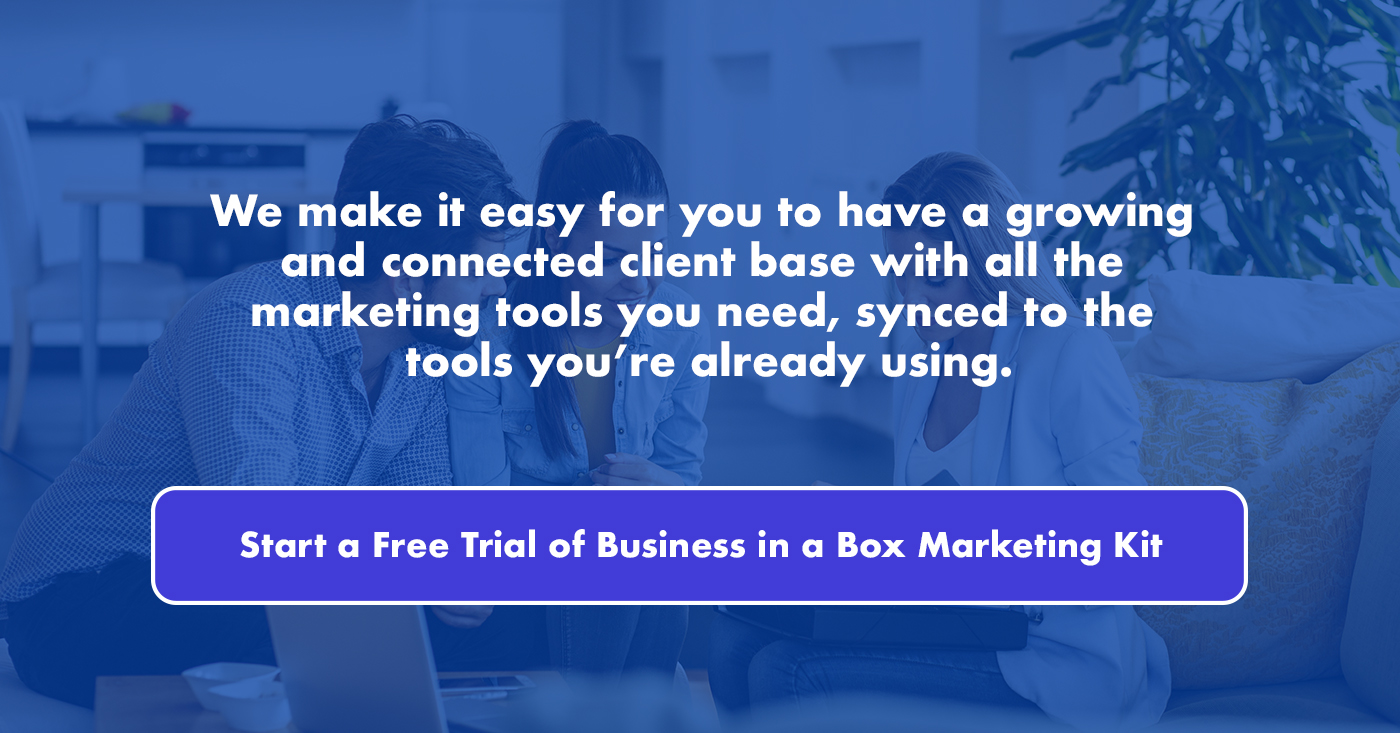Best Marketing Strategies for Small Businesses
Don’t try to use all of them. Don’t even try to do most of them. Pick 1 or 2 (maybe 3) of the channels you believe will best connect with your audience, and focus on fine-tuning them to perfection.
STRATEGIES
- Email Marketing
- Social Media Marketing
- Content Marketing
- SMS (Text) Marketing
- Out-of-Home Advertising (OOH)
Small business marketing is an ever-changing ecosystem. It’s constantly evolving, and entrepreneurs need to stay on top of the trends to get the most bang for their marketing bucks. But getting started is pretty intimidating—it’s like walking into Disney World without a map or plan.
Where to begin?
Should your small business start cold calling customers? Or would you be better off trying to get in on the Clubhouse scene? And what about podcasting? Oh, and video is crushing it online right now—maybe start a YouTube channel, too?
See how easy it is to get lost? Unless you’ve got money to burn and time to waste, you can’t afford to throw darts at the marketing wheel to see what sticks. You need to make realistic estimates, fine-tune your plan, and execute to perfection.
Chances are, you don’t have a large marketing team or budget—and that’s just fine. You can succeed with a teeny-tiny team and limited funds—but you’ll need to get mega dialed in with your targeting and campaigns.
That’s easier said than done, but it’s also why we created this ultimate guide to small business marketing. This step-by-step resource will walk you through getting your marketing program up and running. We’ll show you:
- Which non-negotiable assets do you need (regardless of your industry)
- How to gather deep insights about your customer base
- The top 5 small business marketing strategies (and which to use)
- How to nail your small business marketing budget
- How to use analytics to juice your marketing for all it’s worth
How to Market a Small Business in 2021 and Beyond
Marketing tactics have changed over the last 100 years. Imagine Henry Ford’s first automobiles: “They can have any color they want… as long as it’s black,” he said. Fast forward to today, and you can find just about any product in all the colors of the rainbow and more.
It’s not that Ford was a lousy business person—far from it. Times change, cultures evolve, behaviors adjust, and customers adapt.
Decades ago, you’d market your small business on the radio, in the newspaper, and with print ads. Now, you’ll likely be on Instagram, email, and Google. And in 2030, it may be something entirely different.
It all depends on your customers. However, regardless of your customer preferences or industry, there are a few must-have marketing assets your business will need. Let’s start there before moving on to more niche tactics.
Must-Have Small Business Marketing Assets
Whether you own a quantum-computing startup or a run-of-the-mill diner, your business needs a few fundamental marketing assets:
- Website
- Social media profiles
- Email address
- Google Business Profile
- Phone number
Website
Every business needs a website. Your website is the digital domain for people to learn more about your business. It’s a place where you can drive traffic, and it’s also a place where people can go on their own.
You own your website. Twitter can shut down accounts when it pleases, Amazon can delist products, and Gmail can filter all your emails to the spam folder—but you’re in complete control of your web domain.
“Email lists and websites are the [only] two things you can own on the internet. Everything else is just rented,” said Tobi Lutke, CEO of Shopify.
Social Media Profiles
Google a business. Any local business. Now, look through the search results. We’d wager at least 2 or more of those first-page listings are for pages on social media platforms. Consumers look for brands on social networks now—it’s a sign of legitimacy and relevancy.
Whether you plan on using them extensively or not, go ahead and claim a handle on all the major social media networks: Facebook, Instagram, LinkedIn, and Twitter. Go ahead and do Snapchat, TikTok, and Pinterest, too, if you feel inclined.
At a bare minimum, upload your business logo and fill out your contact and “about” information.
Email Address
Customers prefer to interact with brands through email. Your business needs an email address, whether that’s for marketing, sales, or customer support. Display it on your website, social media profiles, and marketing materials to make it easy for your audience to contact you.
Google Business Profile
When you Google a business on Google Search or Google Maps, you’ll see that business’s information (location, photos, hours of operation, and more) displayed at the top of your search results. That’s a Google Business Profile.
Google pulls information from around the internet to automatically create business page listings. So, like it or not, Google will likely display information (accurate or not) about your business if you don’t claim and verify ownership of your Google Business Profile.
Maintain this listing and keep it up to date—it’s often the first thing customers will find when searching for your business.
Phone Number
Many consumers (especially older generations) still prefer to interact with businesses through good old phone calls. While a phone number isn’t essential, it’s often best to practice to have one for your business.
Fortunately, it’s cheap and easy to buy a business phone number. You can even get one for free with Google Voice (psst: just sign up “For personal use”).
Marketing Isn’t About What You Want—It’s About What Your Customers Want
Before you dig too deep into the marketing weeds, you need to learn more about your audience. Marketing isn’t about you—it’s about your customers. It’s about their wants, needs, worries, and aspirations.
Marketing strategies and tactics are fun but they’re only a means to connecting with your customers.
For example, it doesn’t make sense for a food truck to start streaming on Twitch if no potential buyers are on the platform. Sure, it may be entertaining and scratch an oh-so-satisfying entrepreneurial itch, but it’s not going to bring in the foot traffic like a local partnership or targeted SMS campaign will.
Learn who your customers are and what they want. You could get really sophisticated and launch more formal qualitative and quantitative research, but that can get expensive. When you’re just gathering initial insights, keep it simple and budget-friendly.
Here are a few easy ways to gather audience insights on a budget:
- Surveys: Send out simple surveys to your customers to learn more about them.
- Industry research: Search the latest trends and information online to learn more about your audience from published studies and surveys.
- Talk to your customers: Have conversations with your customers (or potential customers) to figure out what they like, dislike, and want.
- Analytics: Use your marketing platform analytics to analyze open rates, click-through rates, and auto-populated demographics to learn more about your audience.
5 Best Marketing Strategies for Small Businesses (Don’t Use All of Them)
Now, on to the fun part—picking your marketing strategies. This is by no means a comprehensive list, but it’s a good starting point for the most tried-and-true tactics and channels.
Don’t try to use all of them. Don’t even try to do most of them. Pick 1 or 2 (maybe 3) of the channels you believe will best connect with your audience, and focus on fine-tuning them to perfection.
1. Email Marketing
Time and time again, “experts” have predicted the death of email. Sorry, Zuckerburg, but email is still alive and kicking—and it’s not showing any signs of slowing down.
The world has over 4 billion email users, and it’s the go-to form of digital identification. Think about it. How do you log in to your bank account, payroll system, or even your Facebook account? With an email address.
Email generates a whopping 122% ROI, and it can go a lot higher than that. Think about it. Sending a few thousand emails costs just a few dollars, but a single purchase from those emails could be worth hundreds or thousands.
There’s a lot that goes into email marketing. From growing an engaged audience to building conversion funnels and win-back campaigns, email could be your sole marketing channel.
Learn the ins and outs of building an engaged, profitable list with our Ultimate List Building Bundle, a two-pack special that includes list-building strategies and landing page-building techniques.
2. Social Media Marketing
Social media is a unique organic and paid combo marketing opportunity with infinite potential. You could collaborate with local influencers, live stream, launch paid ads, or sell directly through platforms.
With so many options, the hardest part is narrowing down your tactics. You’ll be hard-pressed to avoid shiny object syndrome, but you’ll need to overcome it to succeed in this medium.
Pick 1 or 2 channels you want to focus on and zero in on your marketing tactics. For example, you might experiment with Twitter ads or Instagram influencers. Refine your strategy and resist the urge to immediately jump ship if it doesn’t work out. Social media marketing usually takes a little time to prove its worth.
3. Content Marketing
Content is king. But what is content?
- Blog posts
- Guides (like this one you’re reading right now)
- Videos
- Pictures
- Product descriptions
- Case studies
- Presentations
- Whitepapers
- Tutorials
- Emails
- Social media posts
The list goes on and on. It’s easy to get lost in this simple marketing tactic, so make sure you’re laser-focused and stick to your strategy.
For example, if you’re going to go hard on search engine optimization (SEO), be prepared for 9 months or more of blog writing, site reorganizing, and link building. Content needs vary depending on your audience.
4. SMS (Text) Marketing
SMS marketing (also known as text message marketing) is becoming one of the most prevalent marketing channels. Just about everyone has a phone—and almost half the world’s population has a smartphone. Texting is quick and easy, and it’s one of the fastest ways to get your customer’s attention.
Shopify estimates that an entire sales cycle can happen in just 30 seconds through SMS. Yes, you read that right. 30 seconds. Plus, users read 90% of SMS marketing messages in just 3 minutes. That’s fast!
Text message marketing has been used by countries worldwide for years now, but it’s starting to pick up steam in the US. Not every business is on board yet, so there’s still a ripe opportunity for startups to become early(ish) adopters.
5. Out-of-Home Advertising (OOH)
Have you ever heard of Little America? If you haven’t driven the length of I-80 across Wyoming, then probably not. However, if you have driven across Western Wyoming, then there’s no doubt you know everything there is to know about the small hotel and resort—even if you’ve never been there.
Why’s that? Because Little America’s long-time billboard campaign is the epitome of successful out-of-home advertising. They’ve strategically placed billboards (big and small) along with 100s of miles of open road, promoting everything from their ice cream cones to their lodging.
OOH, advertising doesn’t work for every business, but if you own a restaurant, hotel, or retail location that relies on in-person customers, it’s still a classic marketing tactic.
Nailing Your Small Business Marketing Budget
Your industry, size of business, and growth stage will all impact your marketing budget. The US Small Business Administration (SBA) recommends allocating 7% to 8% of your revenue to marketing, but there’s no golden number.
When you’re just starting out, you’ll probably need to invest more into marketing to build awareness and initial customers. You won’t be able to rely on sales to fund your marketing, so you’ll likely need substantial bootstrapping, a small business loan, or equity financing.
Continue to adjust your budget. Look at your financial reports and your analytics to see what’s going well and what’s not.
For example, if you find bumping up your Facebook Ads investment leads to an incremental boost in revenue, you may just want to throw more budget at the machine and see if it continues to scale. And if you discover your text message marketing campaign isn’t producing many sales, you might want to reallocate the budget to another channel.
Remember: all marketing has a cost. There’s no such thing as free lunch. Whether that’s SEO or word-of-mouth marketing, there’s still an expense. If it doesn’t require money, then it likely costs time—and a lot of it. And time is money.
Also, keep in mind that marketing is never-ending. You either scale it up or scale it down, but you never turn it off: not during a recession, not during a global pandemic, not during a lockdown, not during ever.
When one door (channel) closes, another opens. Document your marketing plan and revisit it often to ensure you’re getting the most bang for your buck.
Analytics: The Data Behind Juicing Your Marketing for All It’s Worth
Your data is the gold mine of all your marketing efforts. It determines the who, what, where, and how of your marketing strategies, timing, and budgets.
Use data to inform all your small business marketing decisions. If you want to start running ads on Instagram, ensure you have numbers and financial estimates to back it up. If you’re going to double your email marketing budget, check to see if there are statistics to support your decision.
If you can’t find data to support a marketing decision, you should seriously rethink your choice. Fortunately, the more marketing you do, the more data you collect—which helps refine your future marketing efforts.
How to Get Started
It may sound cliche (okay, it definitely is cliche), but the most challenging part of small business marketing is getting started. Marketing is a brand-new, ever-changing world full of tremendous opportunity, shiny objects, and budget-eating distractions—but it gets easier as you go.
Start small. Don’t feel like you need to throw hundreds or thousands of dollars at the wall to see what sticks. Analyze your audience, pick a couple of marketing channels, launch a campaign, and see how it goes. If you see results, blow it up and scale your success. If you don’t, experiment with a new channel or marketing strategy.
Not marketing isn’t an option (unless you’re Tesla). There’s too much real-world and digital clutter to get noticed if you sit idly by—you need to put your business front and center to win your customers’ attention and wallets.
























